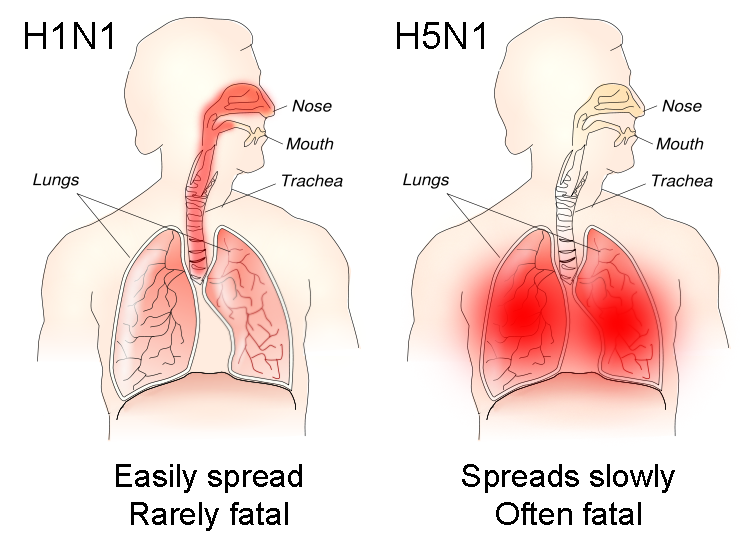US influenza statistics by flu season on:
[Wikipedia]
[Google]
[Amazon]
 US
US
How CDC Estimates the Burden of Seasonal Flu in the U.S.
Scroll down for table and illustration. The tables below include the latest available years the CDC has provided on their website.
* 2019 to 2020 season is a preliminary estimate.
* 2019 to 2020 season is a preliminary estimate.
 US
US influenza
Influenza, commonly known as "the flu", is an infectious disease caused by influenza viruses. Symptoms range from mild to severe and often include fever, runny nose, sore throat, muscle pain, headache, coughing, and fatigue. These symptoms ...
statistics by flu season
Flu season is an annually recurring time period characterized by the prevalence of an outbreak of influenza (flu). The season occurs during the cold half of the year in each hemisphere. It takes approximately two days to show symptoms. Influen ...
. From the Centers for Disease Control and Prevention
The Centers for Disease Control and Prevention (CDC) is the national public health agency of the United States. It is a United States federal agency, under the Department of Health and Human Services, and is headquartered in Atlanta, Georgi ...
page called "Disease Burden of Flu":
"Each year CDC estimates the burden of influenza in the U.S. CDC uses modeling to estimate the number of flu illnesses, medical visits, hospitalizations, and deaths related to flu that occurred in a given season. The methods used to calculate these estimates are described on CDC’s webpageHow CDC Estimates the Burden of Seasonal Flu in the U.S.
Scroll down for table and illustration. The tables below include the latest available years the CDC has provided on their website.
Hospitalizations and deaths
* UI = uncertainty interval. * Row numbers are static. Other columns are sortable. This allows ranking of any column.Symptomatic illnesses and medical visits
* UI = uncertainty interval. * Row numbers are static. Other columns are sortable. This allows ranking of any column.See also
* Influenza pandemic *2009 swine flu pandemic
The 2009 swine flu pandemic, caused by the H1N1 influenza virus and declared by the World Health Organization (WHO) from June 2009 to August 2010, is the third recent flu pandemic involving the H1N1 virus (the first being the 1918–1920 Span ...
* COVID-19 pandemic in the United States
The COVID-19 pandemic in the United States is a part of the COVID-19 pandemic, worldwide pandemic of COVID-19, coronavirus disease 2019 (COVID-19) caused by SARS-CoV-2, severe acute respiratory syndrome coronavirus 2 (SARS-CoV-2). In the Uni ...
. Statistics section.
* COVID-19 pandemic by country and territory. Flu statistics are often compared to coronavirus statistics.
* COVID-19 pandemic cases. More statistics for comparison purposes.
* COVID-19 pandemic deaths. More statistics for comparison purposes.
* Influenza vaccine
Influenza vaccines, also known as flu shots, are vaccines that protect against infection by influenza viruses. New versions of the vaccines are developed twice a year, as the influenza virus rapidly changes. While their effectiveness varies fr ...
* Bird flu
"Bird Flu" is an urumee melam-dance song by recording artist M.I.A. on her second studio album '' Kala'' (2007). It was released as a digital download in 2006 through XL Recordings under exclusive license to Interscope Records in the US. Cr ...
* Human flu
Humans (''Homo sapiens'') are the most abundant and widespread species of primate, characterized by bipedalism and exceptional cognitive skills due to a large and complex brain. This has enabled the development of advanced tools, culture, an ...
* Swine flu
* Horse flu
Equine influenza (horse flu) is the disease caused by strains of influenza A that are enzootic in horse species. Equine influenza occurs globally, previously caused by two main strains of virus: equine-1 (H7N7) and equine-2 (H3N8). The OIE now cons ...
* Dog flu
The dog (''Canis familiaris'' or ''Canis lupus familiaris'') is a domesticated descendant of the wolf. Also called the domestic dog, it is derived from the extinct Pleistocene wolf, and the modern wolf is the dog's nearest living relative. D ...
* Freshers' flu
Freshers' flu is a name commonly given to a battery of illnesses contracted by new students (freshers) during the first few weeks at a university, and colleges of further education in some form; common symptoms include fever, sore throat, severe ...
* 2012–2013 flu season
The 2012–2013 flu season was an epidemic flu season in the United States.
United States
By the week ending 29 December 2012, the CDC reported that 29 U.S. states had high numbers of reports of flu. By 13 January, nearly all U.S. states had exper ...
* 2017–2018 United States flu season
The 2017–2018 United States flu season lasted from late 2017 through early 2018. The predominant strain of influenza was H3N2. During the spring months of March–May, influenza B virus became dominant.
In all states except Hawaii and Oregon, ...
* 2019–2020 United States flu season
The Centers for Disease Control and Prevention (CDC) estimates that, as of April 4, 2020, the 2019–2020 United States flu season had caused 39 million to 56 million flu illnesses, 410,000 to 740,000 hospitalizations and 24,000 to 62,000 deaths. ...
References
External links
{{Authority controlUnited States
The United States of America (U.S.A. or USA), commonly known as the United States (U.S. or US) or America, is a country primarily located in North America. It consists of 50 states, a federal district, five major unincorporated territorie ...
Disease outbreaks in the United States